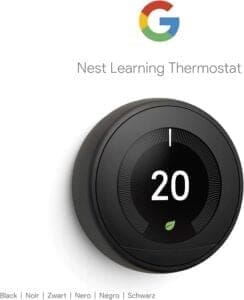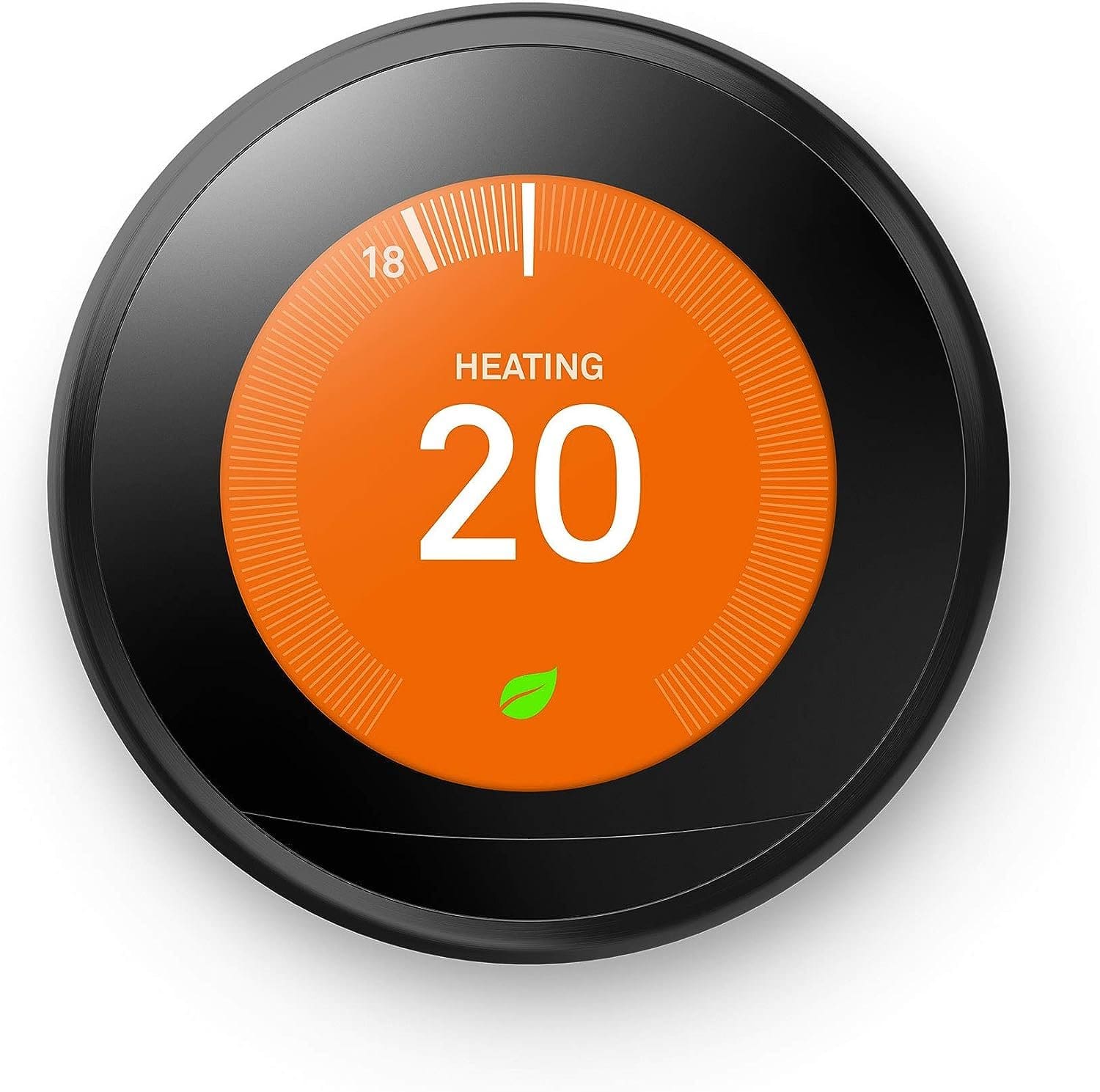Are you tired of constantly adjusting the temperature in your home, never quite getting it right? Look no further because we have the solution for you: smart thermostats. If you’re wondering what sets them apart from regular thermostats, let us enlighten you. Smart thermostats are devices that can connect to your home’s Wi-Fi network, allowing you to control the temperature remotely through your smartphone or computer. They also have additional features like learning your preferences, detecting when you’re away, and adjusting the temperature accordingly. In contrast, regular thermostats require manual adjustments and lack the convenient features that make smart thermostats a game-changer. Curious to know more? Read on to discover the benefits of upgrading to a smart thermostat.
Overview of Thermostats
Definition of thermostat
A thermostat is a device used for controlling the temperature of a space, such as a home or office. It senses the current temperature and adjusts the heating or cooling system accordingly to maintain the desired temperature set by the user.
Importance of thermostats in temperature control
Thermostats play a crucial role in maintaining comfort and energy efficiency. They allow users to set their preferred temperature, ensuring a cozy environment in winter and a cool one in summer. Additionally, by regulating the heating and cooling systems, thermostats help reduce energy consumption and lower utility bills.
Features of Regular Thermostats
Basic temperature control
Regular thermostats provide the fundamental function of adjusting the temperature settings within a specific range. They allow users to set the desired temperature, and the thermostat will maintain it by activating the heating or cooling system as needed.
Manual adjustment
With regular thermostats, users need to manually adjust the temperature settings whenever they want to make changes. This requires physical interaction with the thermostat itself, which can be inconvenient, especially when users are away from home.
Limited programmability
Regular thermostats typically have basic programmable features that allow users to schedule temperature changes at specific times. However, the functionality is often limited, with only a few pre-set options available.
Limitations of Regular Thermostats
Lack of energy-saving features
Regular thermostats lack energy-saving features that can help optimize energy consumption. They do not have the capability to learn user preferences or adjust temperature settings based on occupancy patterns, potentially leading to unnecessary energy waste.
Inefficient temperature monitoring
Traditional thermostats might not provide accurate temperature readings as they are usually placed in fixed locations. This can result in the heating or cooling system running longer than necessary, leading to energy inefficiency and discomfort.
Limited connectivity
Regular thermostats do not offer connectivity options or the ability to integrate with other smart devices. This lack of connectivity restricts users from remotely accessing and controlling their thermostat, potentially limiting convenience and flexibility.
Introduction to Smart Thermostats
Definition of smart thermostat
A smart thermostat is an advanced temperature control device that connects to the internet and offers a range of features beyond the capabilities of regular thermostats. It allows users to control and monitor their home’s temperature remotely, optimizing energy efficiency and providing enhanced convenience.
Integration with home automation systems
One of the key advantages of smart thermostats is their ability to integrate with home automation systems. This integration allows users to control not only their heating and cooling systems but also other smart devices like lighting, security systems, and appliances, all from a single interface.
Enhanced energy efficiency
Smart thermostats are designed to optimize energy usage and reduce waste. They feature advanced algorithms and learning capabilities that enable them to learn user behavior, adjust temperature settings automatically, and create personalized energy-saving schedules. This not only saves energy but also helps reduce utility bills over time.
Smart Thermostat Features

Wi-Fi connectivity
Smart thermostats are equipped with Wi-Fi connectivity, enabling them to connect to the internet and be controlled remotely via smartphone apps or web interfaces. This feature allows users to adjust temperature settings from anywhere, even when they are away from home.
Remote access and control
With smart thermostats, users have the convenience of remotely accessing and controlling their thermostat using their mobile devices. Whether you’re at work, on vacation, or simply lounging in bed, you can easily monitor and adjust the temperature settings to ensure optimal comfort.
Learning capabilities
Smart thermostats incorporate advanced algorithms and sensors that enable them to learn from user behavior and adjust temperature settings accordingly. Over time, they can create personalized schedules based on patterns of occupancy, gradually optimizing energy usage and providing maximum comfort.
Geofencing
Geofencing is a feature offered by many smart thermostats that uses the user’s smartphone location to determine if they are home or away. By setting up virtual boundaries around the home, the thermostat can automatically adjust the temperature based on whether the user is inside or outside the defined area, further enhancing energy efficiency.
Voice control
Another remarkable feature of smart thermostats is their compatibility with voice control assistants like Amazon Alexa or Google Assistant. This allows users to adjust temperature settings, check the current indoor temperature, or even change HVAC modes using simple voice commands, making temperature control more convenient than ever.
Integration with smart home devices
Smart thermostats can integrate with various smart home devices, such as lighting systems or security cameras, to create a cohesive and interconnected smart home ecosystem. This integration allows for seamless automation and coordination between different devices, enhancing overall convenience and comfort.
Advantages of Smart Thermostats
Increased energy savings
One of the primary advantages of smart thermostats is their ability to significantly reduce energy consumption. By learning from user behavior, optimizing temperature settings, and providing remote access and control, these devices can help users save money on their energy bills while minimizing environmental impact.
Optimized temperature control
Smart thermostats provide precise temperature control by continuously monitoring and adjusting the indoor environment. They can adapt to changes in occupancy patterns, outdoor weather conditions, or even personal preferences, ensuring that the temperature is always tailored to meet your specific comfort needs.
Convenience and flexibility
With remote access and control via smartphone apps, smart thermostats offer unparalleled convenience and flexibility. Whether you’re running late from work or want to arrive home to a cozy environment, you can easily adjust the temperature settings on the go, ensuring comfort upon your arrival.
Improved user experience
Smart thermostats offer a more intuitive and user-friendly experience compared to regular thermostats. With user-friendly interfaces, interactive smartphone apps, and voice control capabilities, these devices make temperature control effortless and enjoyable, enhancing the overall user experience.
Potential for utility rebates
In many regions, utility companies offer rebates and incentives for homeowners who upgrade to energy-efficient devices, including smart thermostats. Taking advantage of these programs can lead to additional cost savings and make the transition to a smart thermostat more affordable.
Installation and Compatibility
Compatibility with HVAC systems
Before purchasing a smart thermostat, it is essential to ensure compatibility with your existing HVAC (heating, ventilation, and air conditioning) system. Smart thermostats generally work well with most common HVAC systems, including gas, oil, electric, and forced-air systems. However, it is recommended to check the device’s specifications and consult professionals if needed.
Installation requirements
Installing a smart thermostat usually involves replacing the old thermostat with the new device. It requires basic electrical knowledge and may involve wiring and configuration. Some models come with detailed installation instructions and videos, while others may require professional installation for more complex setups.
DIY vs. professional installation
For users with electrical knowledge and confidence in handling installation tasks, a DIY installation may be feasible. However, if the thought of dealing with electrical connections and wiring is daunting or if the HVAC system is complicated, it is advisable to seek professional installation services. This ensures that the thermostat is installed correctly and optimally configured for seamless operation.
Cost Considerations
Price range of smart thermostats
The price range of smart thermostats varies depending on the brand, model, and features. Entry-level smart thermostats typically start around $100, whereas premium models with advanced features can cost up to $300 or more. It is essential to consider the desired features and budget when selecting a smart thermostat.
Comparison with regular thermostat costs
Regular thermostats are generally more affordable than their smart counterparts, with basic models starting as low as $20. However, it’s important to consider the long-term cost savings and energy efficiency benefits that smart thermostats offer. While the initial investment may be higher, the potential for energy savings can result in significant financial benefits over time.
Long-term energy savings
Smart thermostats are designed to optimize energy usage by learning user behavior, adjusting temperature settings based on occupancy patterns, and providing remote access and control. These energy-saving features can result in substantial long-term savings on energy bills, potentially outweighing the initial cost of the device.
Choosing the Right Thermostat
Assessing personal needs and preferences
When choosing a thermostat, it’s important to assess your personal needs and preferences. Consider factors such as the desired level of control, convenience features like remote access or voice control, and the willingness to invest in energy-saving technologies. Understanding your requirements will help you make an informed decision.
Considering home automation compatibility
If you have other smart devices or plan on building a fully integrated smart home ecosystem, it’s crucial to select a thermostat that is compatible with your existing or future home automation system. Compatibility ensures seamless connectivity and synchronization, allowing for comprehensive control of all your smart devices.
Researching brand and model options
Researching various brands and models is essential when choosing a smart thermostat. Look for reputable brands known for their reliability, customer support, and compatibility. Read reviews, compare features, and consider the long-term benefits to assist you in finding the best thermostat that meets your needs.
Conclusion
Summary of key differences
In summary, regular thermostats provide basic temperature control and manual adjustment, with limited programmability and energy-saving features. On the other hand, smart thermostats offer advanced features like Wi-Fi connectivity, remote access and control, learning capabilities, geofencing, voice control, and integration with other smart home devices. These features enhance energy efficiency, optimize temperature control, provide convenience and flexibility, and improve the overall user experience.
Benefits of upgrading to a smart thermostat
Upgrading to a smart thermostat presents several benefits. Smart thermostats increase energy savings by optimizing temperature settings, reduce energy waste, and provide remote access and control. They offer convenience and flexibility, allowing users to adjust temperature settings from anywhere. Moreover, the potential for utility rebates and long-term energy savings makes the investment in a smart thermostat financially advantageous. Consider your personal needs, home automation compatibility, and research various options to choose the right smart thermostat that suits your requirements and preferences.
